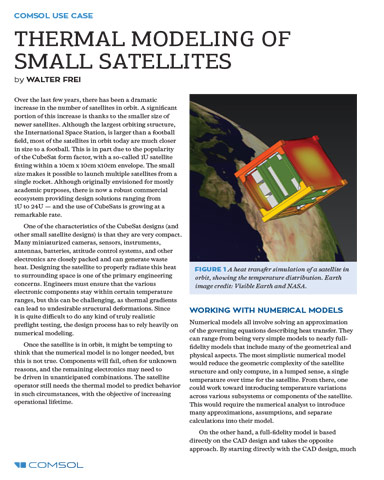October 20, 2023
Over the last few years, there has been a dramatic increase in the number of satellites in orbit. A significant portion of this increase is thanks to the smaller size of newer satellites. Although the largest orbiting structure, the International Space Station, is larger than a football field, most of the satellites in orbit today are much closer in size to a football. This is in part due to the popularity of the CubeSat form factor, with a so-called 1U satellite fitting within a 10cm x 10cm x10cm envelope. The small size makes it possible to launch multiple satellites from a single rocket. Although originally envisioned for mostly academic purposes, there is now a robust commercial ecosystem providing design solutions ranging from 1U to 24U — and the use of CubeSats is growing at a remarkable rate.
One of the characteristics of the CubeSat designs (and other small satellite designs) is that they are very compact. Many miniaturized cameras, sensors, instruments, antennas, batteries, attitude control systems, and other electronics are closely packed and can generate waste heat. Designing the satellite to properly radiate this heat to surrounding space is one of the primary engineering concerns. Engineers must ensure that the various electronic components stay within certain temperature ranges, but this can be challenging, as thermal gradients can lead to undesirable structural deformations. Since it is quite difficult to do any kind of truly realistic preflight testing, the design process has to rely heavily on numerical modeling.
With COMSOL Multiphysics engineers can quickly iterate and improve designs, verify operational conditions, and share their numerical models with coworkers and customers as simulation applications.
Download this case study to learn more.
Fill out the information below to download the resource.
Latest News











